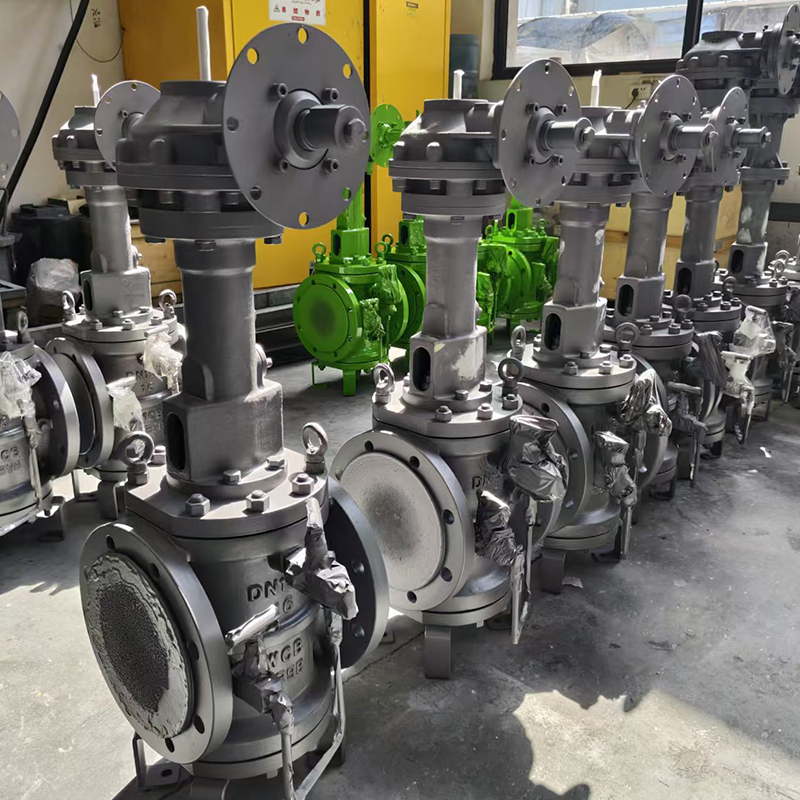
Valves are crucial components in fluid systems, regulating flow direction, pressure, and volume to ensure smooth operation. Among the many types, the one-way flow control valve and the Amresist butterfly control valve are designed for specific applications, with distinct features and benefits. This article discusses the characteristics of these valves and their role in fluid control systems.

The one-way flow control valve, also known as a check valve, is designed to allow fluid to flow in only one direction, preventing backflow that could cause damage or inefficiency in a system. These valves are widely used in systems where backflow would safety hazards, equipment malfunction, or contamination. One-way flow control valves are commonly found in applications ranging from water supply and wastewater systems to hydraulic systems and pumps.
Key Characteristics:
Unidirectional Flow: The important feature of a one-way flow control valve is its ability to allow fluid to pass in one direction while automatically closing when flow attempts to reverse. This function prevents backflow, which can cause damage to pumps, motors, and other system components.
Self-Operated Design: One-way flow control valves are generally self-operating, meaning they require no external power or input to function. The valve's mechanism, such as a disc, ball, or flap, responds to pressure changes to open or close the flow path.
Material Flexibility: These valves are available in a variety of materials, including metals like stainless steel or brass, and plastics like PVC or polypropylene, depending on the fluid and environmental conditions.
Low Pressure Drop: Quality one-way flow control valves are designed to minimize flow resistance when open, reducing energy losses and maintaining system efficiency.
Compact and Reliable: Their simple design and durable materials make one-way flow control valves reliable in many demanding applications, especially where space constraints exist.
One-way flow control valves are essential in ensuring the safe and efficient operation of fluid systems, providing reliable protection against reverse flow and maintaining consistent performance.
The Amresist butterfly control valve is a popular choice for applications involving corrosive fluids or aggressive environments. Known for its corrosion-resistant properties, this valve is used extensively in industries like chemical processing, water treatment, and industrial waste management. The Amresist design combines durability, reliability, and ease of maintenance, making it a preferred solution for controlling the flow of liquids, gases, and slurries in harsh conditions.
Corrosion-Resistant Design Features:
Amresist Coating: The key feature of the Amresist butterfly valve is its unique coating, which provides exceptional resistance to corrosion and wear. This coating is specifically engineered to withstand exposure to harsh chemicals, acidic or alkaline fluids, and other corrosive materials. It acts as a protective layer that prolongs the valve's lifespan, even in aggressive environments.
Material Selection: The body of the valve is often made from high-grade metals like stainless steel, which is naturally resistant to corrosion. Additionally, materials like nickel alloys or Hastelloy may be used in specific applications where higher levels of resistance are needed.
Versatility: Amresist butterfly valves are versatile and can be used in a wide range of industries, from chemical processing to food and beverage production. They are suitable for both clean and dirty fluids and are available in various sizes and pressure ratings to meet different operational requirements.
Enhanced Durability: The corrosion-resistant design of the Amresist butterfly control valve helps reduce maintenance costs and downtime. The valve's robust structure and resistance to environmental factors ensure that it remains operational for an extended period, even in demanding conditions.
Ease of Maintenance: Butterfly valves are known for their simple design, and the Amresist version is no different. With fewer moving parts and a straightforward installation process, these valves are easy to maintain and repair, making them a cost-effective solution for long-term use.
The Amresist butterfly control valve is an choice for industries requiring a reliable, long-lasting valve that can handle corrosive fluids without compromising performance or safety. Its corrosion-resistant features help reduce downtime and extend the life of the valve, providing a valuable solution for a variety of fluid control needs.

